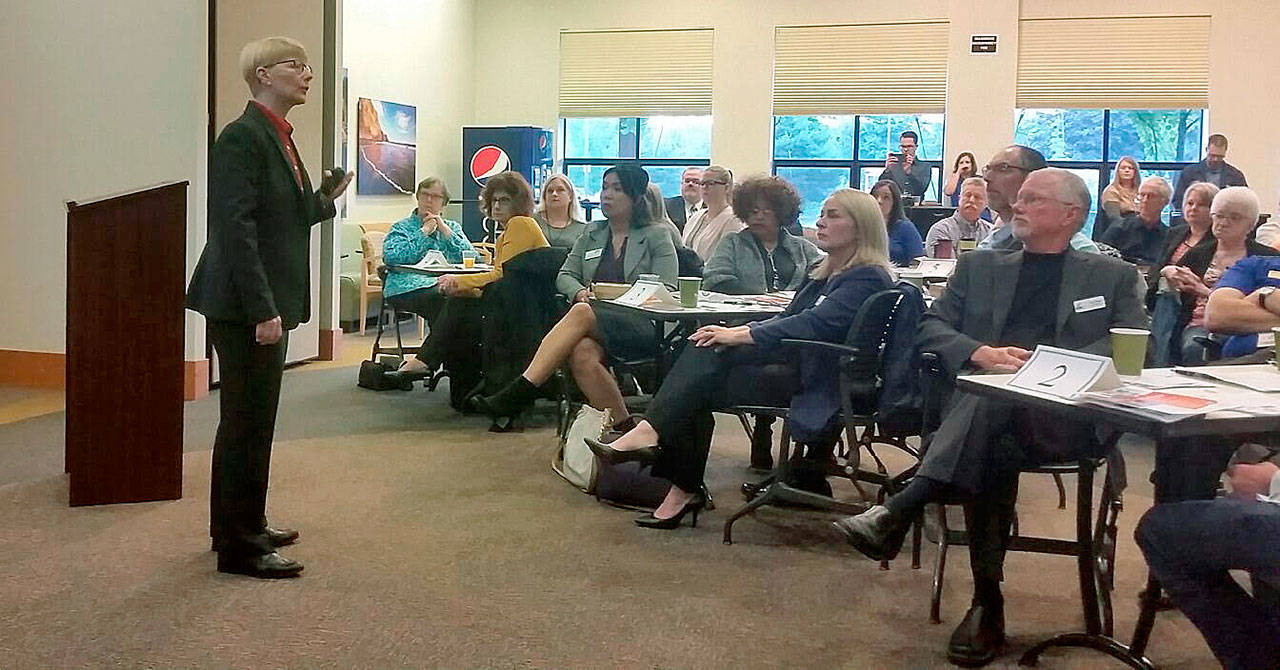Doug Happe, the last remaining founder of Emerald Aire, Inc., a heating and air conditioning company in Auburn, and its president, has a problem with education – it is not meeting the current and future needs of business and industry.
In this critical assessment, he is by no means alone.
“We pay taxes just like everybody else, and we don’t produce a person we can put to work,” Happe said Tuesday morning to the mayors of Auburn, Algona and Pacific, educators, business people and community leaders, all of whom nodded in agreement.
Happe said every year that he puts out a booth at the Auburn Career Fair, he sees young people ready to graduate from high school whom he and others in construction and trades cannot employ. First of all, Happe said, because construction and trades rank near the absolute bottom of their employment preferences, “second only to ballerina.”
Young people who want to earn a good living, but who don’t know what a “family-wage job,” even is.
Kids who are confounded by the idea that five years from the day start their apprenticeship with his company they can command a six-figure salary – because, first of all, he said, they don’t actually know what a six-figure salary is.
Happe’s address tidily summed the problem everybody present for the Cities and Schools Mayors Summit at Junior Achievement of Auburn had come together to talk about, and hopefully set on a path to solution.
According to data prepared for the summit, the state of Washington expects 740,000 job openings by 2021, and some form of post-secondary credential will be essential for most of them.
According to research conducted by Jenee Meyers Twitchell, while 68 percent of Seattle area jobs today require some education beyond high school, only 51 percent of adults have a post-secondary credential or degree, and projections are that only 40 percent of the high school graduating class of 2015 will have some form of post-secondary credential by the age of 26.
It appears that whatever the educational sources, K-12. colleges, trades, technical schools and apprenticeship programs, none are meeting the need.
Data on degree production in the cities of Auburn, Algona and Pacific show that 32 percent of adults 25 and older have earned an associate’s or higher degree.
And parents and individuals aren’t even aware of the opportunities jobs that stop short of requiring a four-year degree provide to earn a family-wage living.
What is needed, according to summit leaders, is a plan that provides for numerous entry and exit points for education and training, a plan that supports initial career preparation and continuing skill development over time.
What is needed is a comprehensive approach to connect education and skills providers with employers, develop effective communication among education providers and employers, and focus on jobs and industries that offer a sustainable supply of living-wage jobs.
“Oftentimes, we think about the dynamic in that the high schools are producing graduates, Green River College is producing graduates, and then we all wait to see what we produce, to see if they are going to be able to fit into your business,” said Suzanne Johnson, president of Green River College. “The reality is, we need to have relationships and communication from the very beginning, so that when those elementary school students are going into our Auburn schools and all the way through, they can see the goals and opportunities.
“…We (in Washington state) are number 40 out of 50 in terms of high school completion in our country, and we see the effects of that,” Johnson said.


